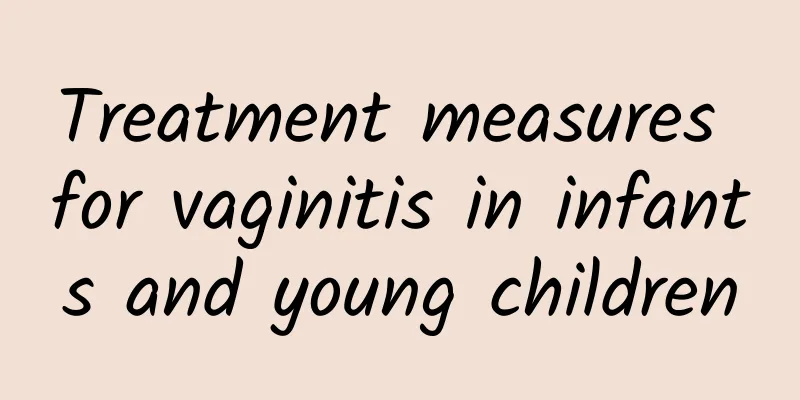How to treat cervical erosion best? The best treatment for cervical erosion in women

|
In the past, many women went for gynecological examinations and often heard that they had symptoms of cervical erosion. This was very worrying. How could the symptoms of cervical erosion appear for no reason? However, we have now cancelled the name of cervical erosion, and the term cervical erosion has disappeared. So should cervical erosion be treated? How to treat cervical erosion? Many patients with cervical erosion have always had a question: is it necessary to treat cervical erosion? In fact, most cervical erosion does not need to be treated. Some of the methods we know for treating cervical erosion are incorrect. Cervical erosion used to be a disease that troubled many women. When going for a physical examination, you will almost certainly be diagnosed with cervical erosion. In 2008, the 7th edition of the undergraduate textbook "Obstetrics and Gynecology" cancelled the name of "cervical erosion" and replaced it with the physiological phenomenon of "cervical columnar epithelium ectopia". Cervical erosion, in the final analysis, is actually a misunderstanding of a normal manifestation of the cervix in the past. Cervical columnar epithelial ectopia is a normal physiological phenomenon, and there is no special clinical manifestation. Some people may experience contact bleeding, but this is just an individual difference in the cervix, just like some people will bleed from their teeth or mouth when they chew something hard. If the amount of leucorrhea increases, turns yellow, or has a strange smell, it is a sign of cervical inflammation. Cervical cysts and hypertrophy are also the result of chronic cervical inflammation. Cervical columnar epithelial ectopia does not require any treatment. Many current methods for treating cervical erosion are wrong. However, symptomatic cervicitis needs to be treated. Acute inflammation is treated with suppositories, and chronic inflammation can be treated with physical therapy such as laser or freezing. Regular cervical examination is necessary, not to prevent cervical erosion, but to prevent cervical cancer. The occurrence of cervical cancer is related to infection with human papillomavirus (HpV). Some patients with high-risk HPV infection are prone to precancerous lesions and cervical cancer when they are persistently infected at the squamous-columnar junction of the cervix. Since the advent of cervical smears, the mortality rate of cervical cancer has dropped significantly. The key is early prevention and treatment. It is currently recommended that women over the age of 21 should undergo a cervical smear examination once a year. After the age of 30, an HPV examination can be combined. If three consecutive HPV and cervical smear tests are negative, the interval can be extended to once every three years, and screening can be stopped after the age of 65. Above we explained what cervical erosion is. We know that cervical erosion is no longer the name of a disease, and the term cervical erosion has disappeared. Therefore, if female friends are diagnosed with cervical erosion, most of them do not need treatment. The above article explains in detail how to treat cervical erosion. |
Recommend
The most common symptom of uterine fibroids is an abdominal mass
The most common symptom of uterine fibroids is ab...
How much harm will the unknown symptoms of uterine fibroids bring to you!
Whether uterine fibroids have symptoms and their ...
Expert advice: Physical therapy is a good way to treat cervical erosion
In clinic, many patients with cervical erosion ha...
What causes abnormal dysmenorrhea?
Dysmenorrhea refers to pain in the lower abdomen ...
Dietary remedies to relieve discomfort of adnexitis
Adnexitis is a common gynecological disease. Pati...
It is important to understand the causes of pelvic inflammatory disease
Nowadays, the incidence of pelvic inflammatory di...
How to cure cervical erosion
Cervical erosion is a common gynecological diseas...
What are the symptoms of vulvar leukoplakia?
What are the symptoms of vulvar leukoplakia ? Exp...
What foods should not be eaten when suffering from bacterial vaginosis
Bacterial vaginosis is very familiar to every adu...
What kind of women are more likely to get uterine fibroids? What kind of women are more likely to get uterine fibroids?
Which women are more likely to get uterine fibroi...
Abnormal black vaginal discharge in women
Abnormal black vaginal discharge may be caused by...
What are the causes of female vulva itching?
What is the cause of female vulvar itching? Femal...
What to eat for menopausal syndrome
For many diseases, some auxiliary treatments unde...
What are the causes of irregular menstruation and how to regulate it
Menstrual disorders are a common disease among wo...
Menstruation delayed by one month
Menstruation delayed by one month A one-month del...









